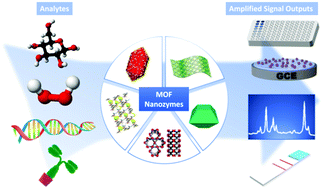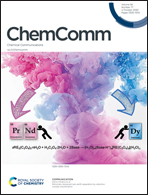Metal–organic framework based nanozymes: promising materials for biochemical analysis
Abstract
In recent years, there has been rapid growth of enzyme-mimicking catalytic nanomaterials (nanozymes). Compared with biological enzymes, nanozymes exhibit several superiorities, including robust activity, easy production, and low cost, which endow them with promising applications in biochemical analysis. As an emerging member of nanozymes, metal–organic framework (MOF) nanozymes are attracting growing attention because of their composition and structural characteristics. Rationally designing MOFs with enzyme-like catalytic ability is opening up a new avenue for biochemical detection. In this Feature Article, we summarize the latest developments of MOF nanozymes and their applications in biochemical sensing. First, the types of nanozymes derived from MOFs are categorized, and effective strategies to improve the weak activity inherent in MOF nanozymes are introduced. Then, the multi-functionalization of MOFs with enzyme mimic activity and other attractive properties is emphasized. After that, the typical applications of MOF nanozymes in the detection of various analytes are rigorously reviewed. Finally, the current challenges and some development directions in this field are discussed. It is believed that the versatile nature of MOFs will bring a bright future for MOF nanozymes in biochemical analysis.

- This article is part of the themed collections: Chemical Communications HOT Articles and Most popular analytical chemistry articles


 Please wait while we load your content...
Please wait while we load your content...